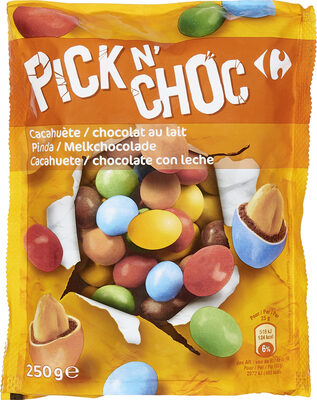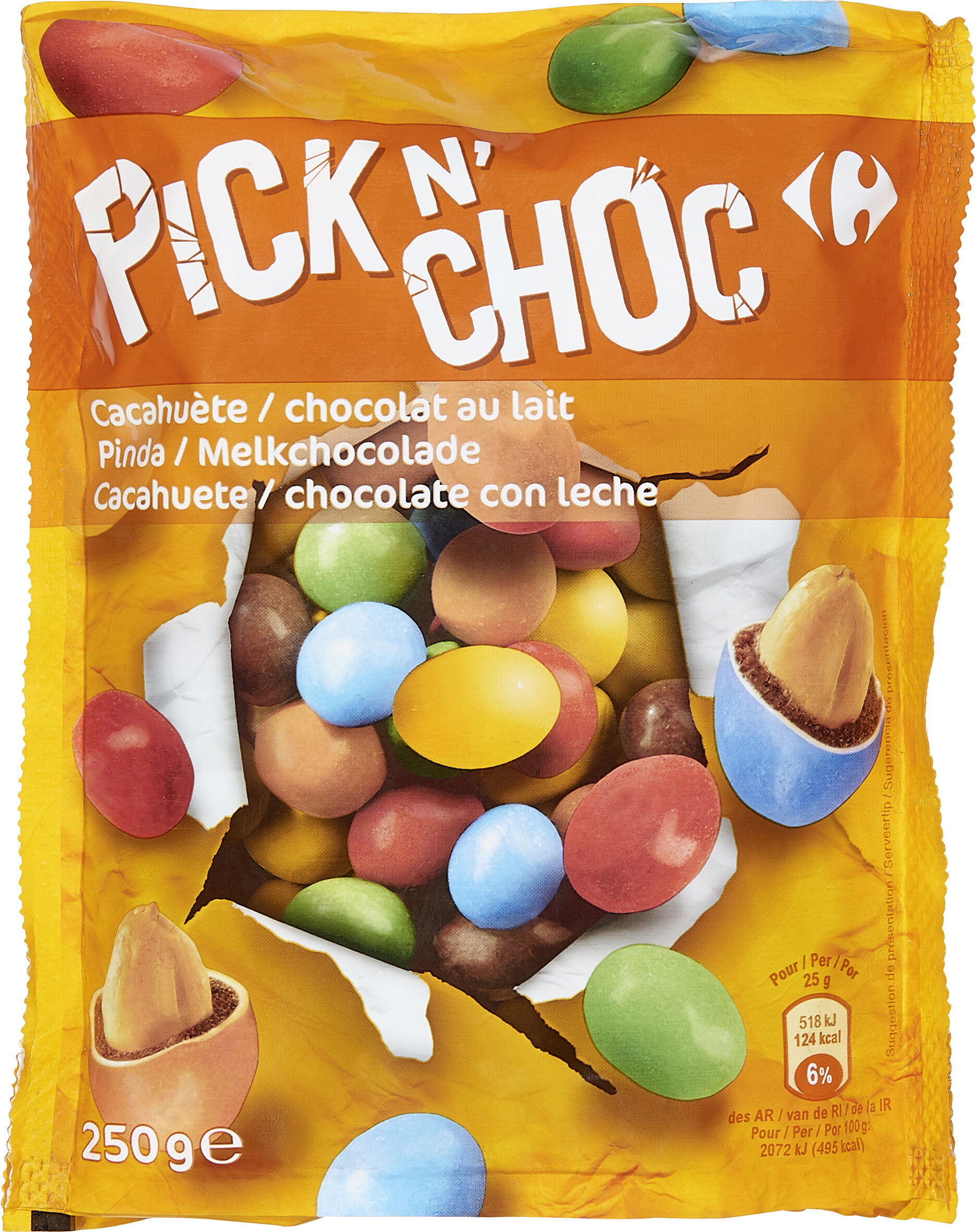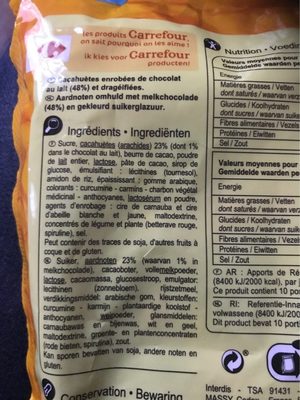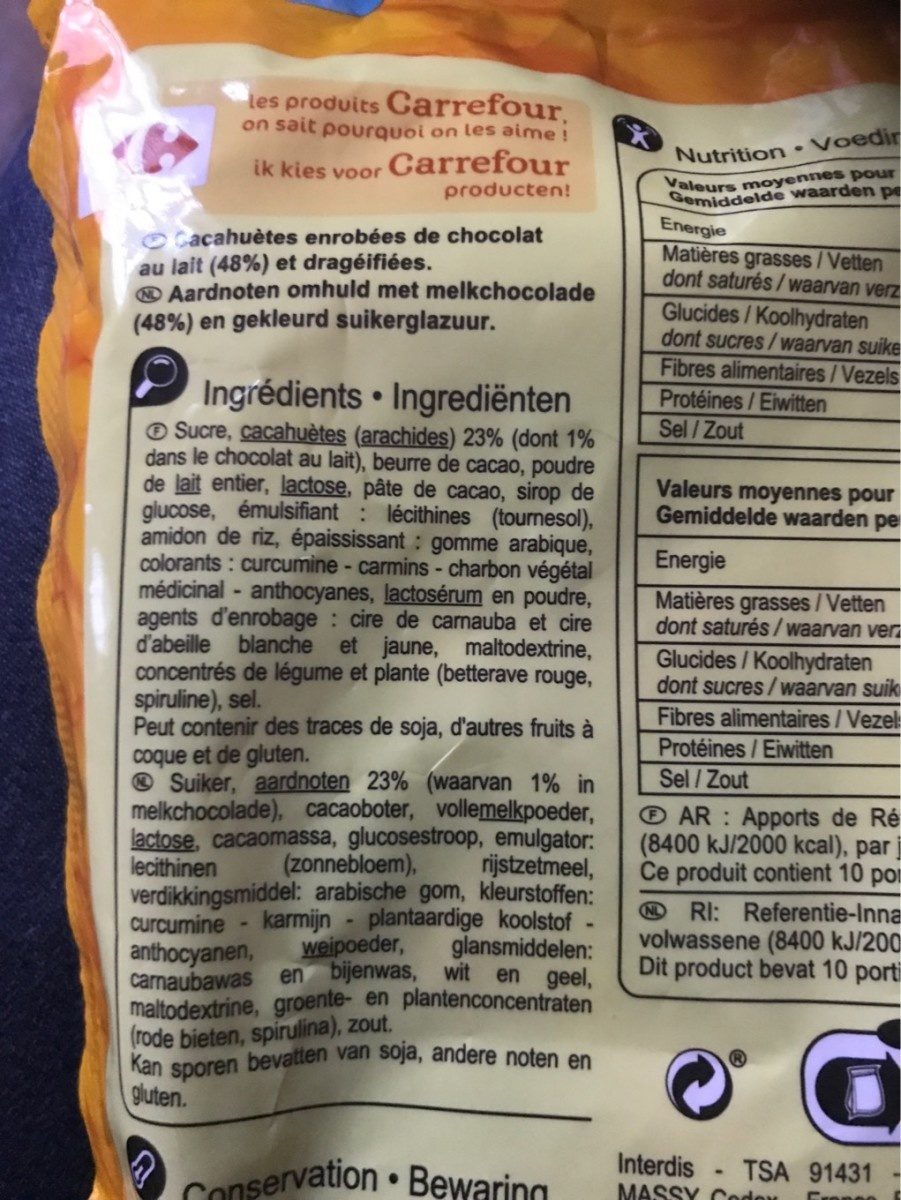Pick n' choc - Carrefour - 250 g
This product page is not complete. You can help to complete it by editing it and adding more data from the photos we have, or by taking more photos using the app for Android or iPhone/iPad. Thank you!
×
Some of the data for this product has been provided directly by the manufacturer Carrefour.
Barra-kodea: 3560070511921 (EAN / EAN-13)
Izen arrunta: Cacahuètes enrobées de chocolat au lait (48%) et dragéifiées.
Kopurua: 250 g
Ontziratzea: en:Plastic, en:Bag
Markak: Carrefour
Kategoriak: en:Snacks, en:Sweet snacks, en:Cocoa and its products, en:Confectioneries, en:Chocolate candies, en:Bonbons, en:Chocolate covered nuts, en:Chocolate covered peanuts
Etiketak, ziurtagiriak, sariak:
en:Green Dot, en:Made in Germany
Producer: Fabriqué en Allemagne par Piasten GmbH, Piastenstrasse 1, 91301 Forchheim pour La Table Européenne pour Interdis.
Dendak: Carrefour, carrefour.fr
Matching with your preferences
Ingurumena
Carbon footprint
Ontziratzea
Transportation
Other information
Other information: 250 g e Cacahuète / Chocolat au lait
Abisua: La consommation de ce produit est déconseillée aux jeunes enfants, ils pourraient l'avaler sans le croquer et risquer de s'étouffer.
Conservation conditions: À conserver à l'abri de la chaleur et de l'humidité. Pour une dégustation optimale, à consommer de préférence avant le / N° de lot : voir dans le bas du sachet.
Customer service: Interdis - TSA 91431 - 91343 MASSY Cedex - France.
Report a problem
Datuen iturria
Product added on by teolemon
Last edit of product page on by quechoisir.
Produktuaren orria -gatik editatua carrefour, driveoff, ecoscore-impact-estimator, foodless, kiliweb, openfoodfacts-contributors, org-carrefour, packbot, tacite, wolfgang8741, yuka.R3A0OVBQc0cvZklzbXZFaDVSNkx4T0J4eXNEMGVVNnVCcklYSWc9PQ.










